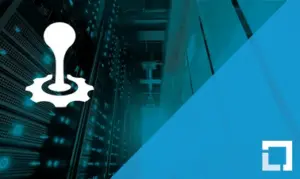As companies become increasingly dependent on cloud infrastructure to deliver products and services as efficiently as possible, it can be overwhelming to keep up with all the technologies available today. This free, self-paced course will give you a fundamental understanding of today’s top open source cloud technology options.
Introduction to Cloud Infrastructure Technologies (LFS151x)



 Welcome!
Welcome!
 Chapter 1. Virtualization
Chapter 1. Virtualization
 Chapter 2. Infrastructure as a Service (IaaS)
Chapter 2. Infrastructure as a Service (IaaS)
 Chapter 3. Platform as a Service (PaaS)
Chapter 3. Platform as a Service (PaaS)
 Chapter 4. Containers
Chapter 4. Containers
 Chapter 5. Containers: Micro OSes for Containers
Chapter 5. Containers: Micro OSes for Containers
 Chapter 6. Containers: Container Orchestration
Chapter 6. Containers: Container Orchestration
 Chapter 7. Unikernels
Chapter 7. Unikernels
 Chapter 8. Microservices
Chapter 8. Microservices
 Chapter 9. Software-Defined Networking and Networking for Containers
Chapter 9. Software-Defined Networking and Networking for Containers
 Chapter 10. Software-Defined Storage and Storage Management for Containers
Chapter 10. Software-Defined Storage and Storage Management for Containers
 Chapter 11. DevOps and CI/CD
Chapter 11. DevOps and CI/CD
 Chapter 12. Tools for Cloud Infrastructure I (Configuration Management)
Chapter 12. Tools for Cloud Infrastructure I (Configuration Management)
 Chapter 13. Tools for Cloud Infrastructure II (Build & Release)
Chapter 13. Tools for Cloud Infrastructure II (Build & Release)
 Chapter 14. Tools for Cloud Infrastructure III (Key-Value Pair Store)
Chapter 14. Tools for Cloud Infrastructure III (Key-Value Pair Store)
 Chapter 15. Tools for Cloud Infrastructure IV (Image Building)
Chapter 15. Tools for Cloud Infrastructure IV (Image Building)
 Chapter 16. Tools for Cloud Infrastructure V (Debugging, Logging, and Monitoring for Containerized Applications)
Chapter 16. Tools for Cloud Infrastructure V (Debugging, Logging, and Monitoring for Containerized Applications)
 Chapter 17. Service Mesh
Chapter 17. Service Mesh
 Chapter 18. Internet of Things (IoT)
Chapter 18. Internet of Things (IoT)
 Chapter 19. Serverless Computing
Chapter 19. Serverless Computing
 Chapter 20. OpenTracing
Chapter 20. OpenTracing
 Chapter 21. How To Be Successful in the Cloud
Chapter 21. How To Be Successful in the Cloud
 Final Exam
Final Exam









